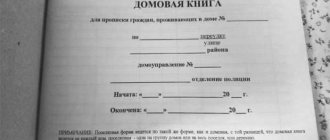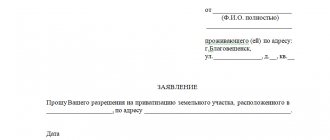Many owners of urban real estate located in apartment buildings decide to create an HOA. This is done not only to optimize utility costs, but also to maintain residents’ property in proper technical condition. Each partnership of real estate owners must be organized in accordance with the regulations of Federal law. At the same time, the HOA is required to maintain accounting records and submit reports generated based on the results of the reporting periods to the tax office.
Features of creating an HOA
The main purpose of creating an HOA is the following:
- effective management of real estate, which legally belongs to the participants of the partnership;
- timely repair and maintenance of utilities;
- calculation of utilities according to real and not inflated tariffs;
- improvement of the area adjacent to apartment buildings, etc.
Federal law does not prohibit property owners' associations from engaging in commercial activities whose purpose is to generate income. In this case, we are not talking about running a business in its direct sense, but about providing small services on a paid basis for the participants of the partnership:
- construction of additional real estate;
- advertising placement;
- rental of real estate;
- carrying out repair work, etc.
When concluding any agreements, the management of the HOA must respect the interests of the homeowners. All proceeds received go to the current account of the partnership. After this, the funds are distributed to special funds. The HOA can spend it only in those areas that were reflected in the statutory documentation approved by all property owners. All funds that will be credited to the current account in the form of membership fees can only be used to pay for utilities, as well as to maintain real estate in proper technical condition.
Russian legislation allows not only owners of city apartments to unite in HOAs, but also owners of private houses located on adjacent land plots.
How to keep accounting records in an HOA using the simplified tax system? Step-by-step instructions and wiring
In fact, the responsibility for maintaining an apartment building lies equally on the shoulders of management bodies and residents. The first of them carry out actions and work to maintain the house and the surrounding area in proper and acceptable form.
- Name of the register and its details.
- The name of the entity that is accepted is called the economic entity. It is on his behalf that the register is filled out.
- The main period for maintaining the register, as well as its compilation.
- Classification of all accounting objects in our care.
- Information about in what currency and in what measurements all transactions with funds are carried out.
- Mandatory reference to the initials and other information about the persons who are, in one way or another, responsible for the operation.
- At the end of the completed register, the surname, first name and patronymic of the responsible person, as well as his signature, are placed.
The procedure for generating funds
Accounting in an HOA involves recording all transactions that are directly or indirectly related to the partnership. The specialist who will be entrusted with accounting is required to draw up primary documentation, the data from which must be posted to the appropriate registers.
When organizing accounting in a partnership, incoming funds from which capital is formed must be registered in a separate accounting register:
- contributions for major repairs;
- receipts in the form of entrance and membership fees;
- penalties for late paid utilities (the full amount of rent is not included);
- subsidies;
- the difference between received utility payments and their actual cost;
- income received while conducting commercial activities, etc.
Taxation of HOAs under the simplified tax system in 2019
The HOA keeps records of targeted funds in account 86 “Targeted Financing”. For account 86, it is necessary to open sub-accounts based on the sources of funds received. Let's consider the accounting of HOA fees, except for payments for housing and communal services, the accounting of which will be discussed below.
How should utility bills be accounted for?
If utility payments have been accrued to the owners of real estate, they must be reflected in the appropriate accounting accounts. The difference that arises between the actual and nominal cost of utility bills is subject to taxation at rates approved by current legislation. If payment for utility services is received into the current account from property owners who have not entered into a partnership and have not entered into an agreement with it for the provision of agency services, then the HOA accounting department must accrue taxes on them in full.
Basic rules for accounting in HOAs (nuances)
In accordance with the plan and provisions of PBU 9/99 (approved by order of the Ministry of Finance dated 05/06/1999 No. 32n) and PBU 10/99 (approved by order of the Ministry of Finance dated 05/06/1999 No. 33n), accounting for contributions from partners for the implementation of activities is kept in account 86 , and receipts from income-generating activities are in account 90.
One of the main tasks is the generation of a financial report (usually for the year), which provides partners with complete and reliable information about the activities of the HOA. In addition, the HOA accounting department prepares an estimate of the HOA's income and expenses for the next year. The estimate is approved at the general meeting of the partners and in the future is the main planning and accounting document for maintaining the accounting of the HOA.
Features of accounting
Features of accounting in HOAs are as follows:
- Based on the results of the reporting period (as a rule, this is a calendar year), financial statements of the HOA are compiled, which are transferred to the members of the partnership for study. The reports must contain reliable information from which property owners can learn about the activities of the partnership, as well as what profit the HOA made.
- Accountants prepare an estimate of expenses and income for the next year, which must be approved at a general meeting of members of the partnership. In the future, it is this document that specialists will rely on when maintaining accounting and tax records in the HOA.
- Information related to the execution of the approved estimate for the reporting period must be posted on the official website of the HOA. The responsibility for checking such estimates is assigned by Federal legislation to the housing supervision inspection (territorial).
Basic accounting entries in the HOA:
| Debit | Contents of business transactions | Credit |
| 76 | Debt in contributions, which is registered with a member of the company | 86 |
| 62 | Debt owed by the owner of a property who refused to join the company | 90 |
| 26 | Expenses that arise during the maintenance of property owned by the company | 70, 69, 02, 10 |
| 26 | Tax calculation under the simplified taxation system | 68 |
| 26 | Costs incurred by the partnership in maintaining its premises in proper technical condition, as well as payment for the services of third-party organizations providing their maintenance | 60 |
| 86, 20 | Distribution of society's costs associated with property maintenance among property owners who have refused membership in the HOA | 26 |
| 90 | Write-off of costs incurred by the company for the maintenance of property that is not the property of the HOA participants | 20 |
| 90 | Expenses associated with servicing the current account, accrued commissions, etc. | 51 |
| 99 | Carrying out balance sheet reformation if the company made a profit based on the results of the reporting period | 84 |
| 84 | Use of the company's retained earnings for targeted financing | 86 |
| 76, 62 | Presentation of company losses for compensation | 84 |
| 86, 20 | Creation of a special fund, the funds of which can be spent on repair work | 96 |
Accounting entries of a partnership operating on the simplified tax system:
| Debit | Contents of business transactions | Credit |
| 76 | Accrual of mandatory contributions to members of the company, which must be made within the time limits approved at the general meeting, in particular contributions that are submitted by all owners for major repairs | 86 |
| 50, 51 | Receipt of contributions from property owners to the current account or cash desk (with the exception of contributions for major repairs, since these amounts must be accumulated in a special account) | 76 |
| 55 | Receipt of contributions from members of the society intended for major repairs | 76 |
| 20, 26 | Reflects the costs of the current period that are associated with the maintenance and management of HOA property | 60, 76 |
| 86 | The costs incurred by the company in managing and maintaining the property are written off (the costs were borne from funds from the fund created for targeted financing) | 20, 26 |
Taxation of HOAs under the simplified tax system in 2018
Typical postings in HOAs are carried out in accordance with the norms of Order No. 94n dated October 31, 2000. It is mandatory to prepare and submit financial statements to Rosstat, as well as the territorial division of the Federal Tax Service. In addition to the balance sheet and financial results report, a report on the intended use of funds is submitted. The main wiring looks like this:
Accounting for HOAs requires accounting and recording of trust funds in the accounts, as well as various payments from other sources. Among the latter are amounts received from members of the owners' association; from business activities; subsidies, etc. All targeted funds are reflected in the account. 86 “Targeted financing”. Sub-accounts are opened as needed. Analytics is carried out by sources of funds.
How are reports generated and submitted?
Accounting in HOAs requires the mandatory generation of reports that must be submitted both to the Federal Tax Service and to statistical authorities and extra-budgetary funds. Accounting statements in such partnerships are prepared for the year (even if the HOA does not carry out commercial activities and is on the simplified tax system), and includes:
- Balance.
- Report on the intended use of funds.
- Register of members of the partnership.
- Income statement.
In addition to accounting reports, the partnership must submit the following forms related to the calculation and payment of wages:
| Federal Tax Service | Form 6-NDFL Form 2-NDFL Average number of employees |
| Pension Fund | Form SZV-M Form RSV-1 |
| FSS | Form 4-FSS |
If the activities of the HOA are carried out on a simplified basis, then it is necessary to submit a corresponding declaration to the Federal Tax Service. It is worth noting that HOAs under the simplified tax system are exempt from paying the following taxes:
- at a profit;
- on property;
- VAT.
Taxation under the simplified tax system provides for the opportunity for a partnership to independently determine its own rate:
- A 6% rate is applied to income.
- A rate of 15% is applied to the difference between income and expenses.
The HOA on OSNO is obliged to accrue and pay to the budget all taxes and fees provided for by law, as well as submit the relevant declarations to the regulatory authorities. For late submission of reports, the responsible persons of the partnership will be subject to penalties and interest.
Accounting for a homeowners association, simplified posting using an example in 2021
The responsibility for accounting and reporting remains with the HOA, even if it does not conduct commercial activities and applies the simplified tax system. In addition to the above forms, the HOA is required to maintain a register of members of the partnership. Tax accounting for a homeowners' association. Features of accounting under the simplified tax system. In most cases, the HOA prefers a simplified system. The main advantage of the simplification for HOAs is a reduction in insurance premiums (20% rate). The HOA accountant must distinguish between receipts that are classified as income and amounts that do not fall under this definition and, accordingly, under taxation.
Option No. 2. An agency agreement has been concluded with the residents. If your HOA acts as an intermediary, receiving money to pay for housing and communal services, make the following entries: Debit 76 Credit 60 - utility fees have been charged; Debit 76 Credit 90, sub-account “Revenue” - agency fees accrued; Debit 60 Credit 50 (51) - payment for the services of the resource supply company is transferred; Debit 50 (51) Credit 76 - payment for utilities received from residents; Debit 50 (51) Credit 76 - intermediary fee received.
We recommend reading: St. Petersburg State University increased academic scholarship
Taxation
Each HOA created by the owners of real estate has the right to independently choose a taxation system for itself. Federal legislation provides for the following tax regimes for such partnerships:
- USN.
- BASIC.
During the process of state registration of an HOA, its owners can choose a simplified taxation system. If they do not indicate this in the appropriate application, the HOA will be automatically transferred to the general taxation system. Specialized Internet resources contain step-by-step instructions that will allow property owners to avoid mistakes when carrying out registration activities.
When determining the tax base, accountants of such partnerships must clearly distinguish which of the funds received can be considered income and which will not be taxed. If funds from property owners in the form of contributions for major repairs are transferred to the current account, they will not be subject to taxation. But, at the same time, if funds for the same purposes come from property owners who refused to join the HOA, then they will be considered income of the partnership.
All funds received to the accountant's current account or to the cash desk of the accountant's partnership must be accounted for separately. Also, separate records should be kept in the appropriate registers of all costs that were incurred at the expense of earmarked revenues. Based on the results of each period, accountants must prepare reports that are submitted to regulatory authorities. They must transfer all taxes to the budget within the deadlines established by law. If the requirements of the Tax Code of the Russian Federation are violated, penalties will be applied to the HOA.
Accounting for HOAs (targeted financing)
If the obligation to provide utility services to residents is not specified in the HOA charter, then the only way to reduce the amount of tax is to conclude an agency agreement with each participant in the partnership, and with each service provider - a separate contract for the supply of energy, water, heat, etc. Receipt of payment from HOA members and from non-HOA members who have agency agreements is reflected in the following entries:
All owners of residential premises must pay mandatory contributions for the needs of common property, regardless of their membership in the HOA. This conclusion follows from paragraph 1 of Article 36 and Article 39 of the Housing Code of the Russian Federation, subparagraph “b” of paragraph 16 of the Rules, approved by Decree of the Government of the Russian Federation of August 13, 2006 No. 491.
We recommend reading: Article 1149 p 1 of the Civil Code of the Russian Federation
Postings in HOAs - basic examples
Modern practice shows that one of the most effective ways to manage an apartment building is an HOA. The organization of an established system for accounting for HOA operations is a prerequisite necessary to ensure the full functioning of the partnership and the fulfillment of its main tasks. In the article we will analyze specific aspects of accounting for HOAs and consider typical accounting entries in HOA enterprises using examples.
HOA (homeowners' association) is a non-profit organization whose purpose is to manage the common property of homeowners, maintain it, and receive utilities. The founders of the HOA are directly the owners of residential apartments in apartment buildings.
Significant and non-significant indicators
Significant indicators include:
- Data on the receipt of funds in the HOA.
- Statistics of settlements with major service providers.
- Information on settlements with owners (tenants) for housing and communal services.
Insignificant indicators include:
- Single transactions.
- Payment of hired labor.
- Irregular purchases.
- Spending on events and holidays.
How is registration carried out in HOAs?
A homeowners' association (HOA) is one of the ways to implement the management of housing associations, permitted and regulated by the legislation of the Russian Federation. Despite the fact that the HOA is a non-profit structure, its activities must be subject to accounting rules: accounting and tax.
IMPORTANT! The source of funds is critical, even for the same purposes. For example, if finances are contributed by the owners of the HOA for major repairs, they are not subject to taxation. If the same finances are contributed by property owners who are not members of the HOA, this will be considered income and included in the tax base.
Accounting in HOAs
Housing and communal services organizations (namely, management companies) receive from the Unified Center only summary data on accrual and payment; accordingly, the management company reflects in its accounting only the total debt of citizens for housing and communal services, which is collected by the Unified Center. It turns out that the situation with the organization of accounting in the Management Company is a little unclear, however, for Russia there are plenty of them. Namely: the Criminal Code in accounting reflects the debt of the population only as the debt of the Unified Center for collecting payments. The SRC does not indicate the debt to the management company in its balance sheet, since the funds passing through it are transit. Often, SRCs indicate debt to housing and communal services (MC) only after receiving payments from the population. At the same time, the following entries are made: D-t 50, 51 K-t 76 “Debt to suppliers of housing and communal services” - payments have been received from the population.
Also, in the process of managing economic activities, the management of HOAs and housing cooperatives needs to receive timely information about the status of mutual settlements between homeowners for payment of housing and communal services. In addition, the HOA is obliged to comply with the requirements for monitoring the intended use of funds received from homeowners. Another task is to carry out separate accounting of financial results in the event that the HOA receives additional income (for example, from renting out property). All these problems can be solved only by building an effective accounting system.
Example of calculation when filling
All the data that is necessary for the calculation can be taken from the passport documentation of the house. As a rule, this document is stored in the management organization, the head of the HOA or the head of the council.
The document does not have secret status and any resident can request a photocopy of it. The following information is needed from the housing complex passport :
- The maximum service life is 17 years.
- Level of improvement - the house is equipped with running water, sewerage, hot water.
- Wall material – red brick.
- Roofing material – slate.
- Roof area, sq. m – 1150 sq.m.
- The wiring option is hidden.
- The number of floors in the house is 9.
- Type of equipment on staircases - elevator available.
- The territory is covered with asphalt.
- Total living area – 7110 sq.m.
- The total area of places for collective use is 2015 sq.m.
- Total non-residential area – 50 sq.m.
- Total area of the attic and basement, sq. m – 1780 sq. m.
- Number of apartments – 90 apartments.
- Yard area – 1350 sq. m.
- Lawn area, sq. m – 400 sq.m.
- Number of power units – 12 pcs.
- Number of signs and reflectors – 15 pcs.
Example: The administration, at a meeting, together with residents, decides on future repairs. On the agenda:
- Painting entrances.
- Restoration of cracks on walls.
- Cosmetic roof repairs.
Personnel necessary to carry out work related to the maintenance and servicing of housing premises.
You need to calculate how many workers will be needed to service a given area:
- Concrete master: 0.31.
- Wiper: 0.228.
- Master mason: 0.18.
- Roofer: 0.61.
- Painter: 0.12.
- Facing: 0.032.
- Tiler: 0.054.
- Carpenter: 0.319.
- Helper: 0.054.
- Plumber: 0.6.
- Universal fitter: 0.008.
- Glass installer: 0.251.
- Carpenter: 0.11.
- Cleaner: 1.5.
- Plasterer: 0.125.
- Welder: 0.3.
- Electrical network engineer: 0.46.
Total: 5,002 workers As a result, 5 workers are needed to maintain the house.
If any workers do not take part in the provision of work and services, then there is no need to indicate them in the calculation.
For example:
- The house is a new building and the company providing the services does not carry out repairs, so workers such as concrete workers, masons, masons, etc. are not taken into account.
- The entrance is not cleaned, which means the janitor and cleaner can be crossed off.
With the service staff, not everything is so primitive. All personnel costs are classified as indirect, which are distributed throughout the housing stock. To maintain a house you need approximately 4.3 managers. Let's say each employee earns 15,000 rubles.
- In other words, their salary will be:
15,000 * 4.3 = 64,500 rubles per month. - The costs will be 30% (based on standard tax payment procedures).
64,500 *30% = 19,350 rubles. - As a result, we have that wages and expenses will amount to 83,850 rubles.
The annual wage fund and expenses are: 83,850 * 12 months = 1,006,200 rubles.
Materials and equipment
As an example, let's calculate materials and inventory.
Cleaner:
- Bucket 1 pc. – 250 rubles.
- Broom 12 pcs. – 400 rubles.
- Scoop 1 pc. - 50 rubles.
- Mop 1 pc. – 400 rubles.
- Brush 1 pc. – 90 rubles.
Total 1190 rubles.
Let's multiply the resulting amount by the number of workers needed for cleaning:
1,511 employees * 1,190 rub. = 1798.09 rubles.
Street cleaner:
- Engine 1 pc. - 200 rubles.
- Sand bucket 1 pc. - 300 rubles.
- Scrap 1 pc. - 300 rubles.
- Shovel-bayonet 1 pc. – 700 rubles.
- Shovel-scoop 1 pc. – 450 rubles.
Total 1950 rubles.
The amount of expenses taken into account is: 0.21 employees * (1798.09 + 1950) = 3748.09 rubles.
Material for planned repairs:
- 10 buckets of paint * 500 rub. = 5000 rubles.
- 5 bags * 100 rub. = 500 rubles.
- 50 slate plates * 200 rub. = 10,000 rubles.
Costs for construction materials are:
Total 15,500 rubles.
We sum up the total expenses and get: 1,006,200 + 1,950 + 15,500 = 1,023,650 rubles.






